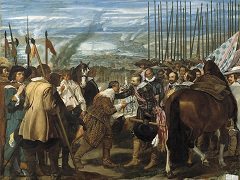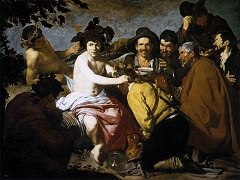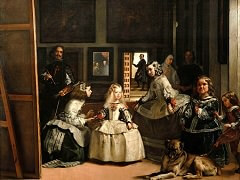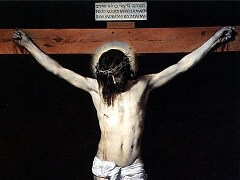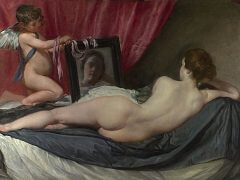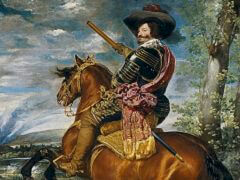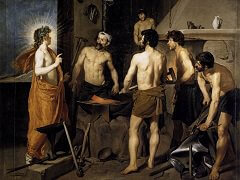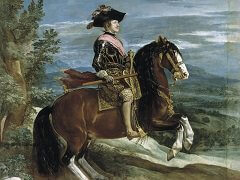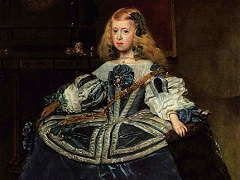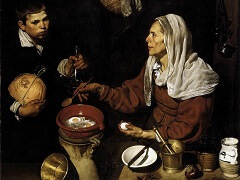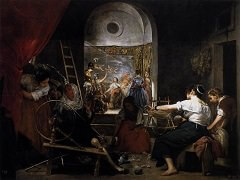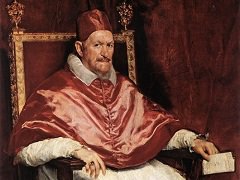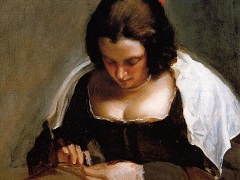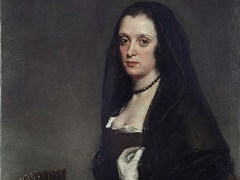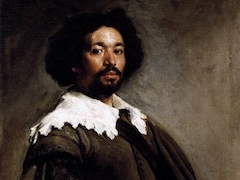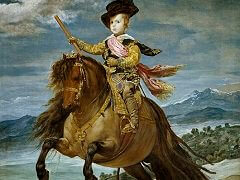Queen Isabel of Bourbon Equestrian, 1635 by Diego Velázquez
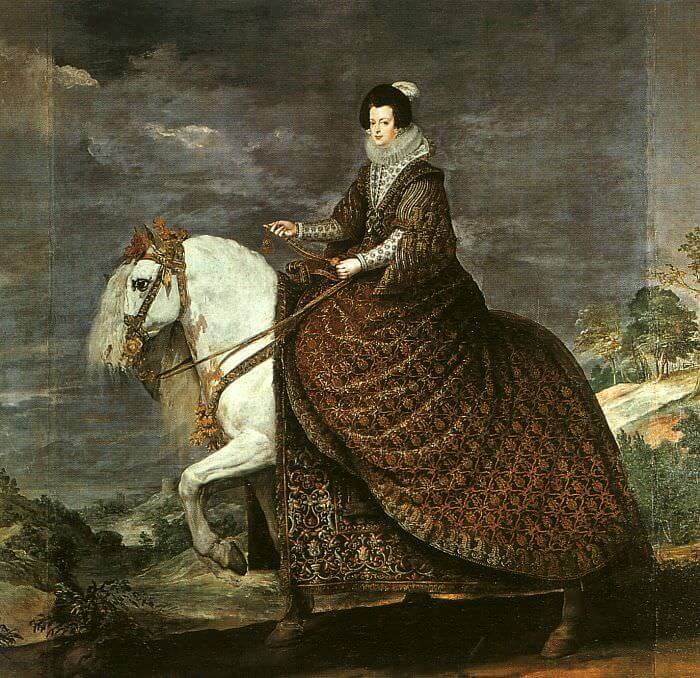
One of the still rather obscure aspects of Velázquez' activity is his work as contractor and decorator; the only side of him that could perhaps be defined baroque. A thorough research might produce some very interesting aspects of the relationship between the king and the court artists. This would be particularly desirable with regard to the decoration of the great throne-room in the new royal palace of Buen Retiro - very simple architecturally, and of which the gilt ceiling of Pedro Martin de Ledesme remains, as well as the friezes with the arms of all the imperial dominions. The iconographical programme included portraits of Philip III and his consort, Philip IV, his wife Isabella of Bourbon and son Baltasar Carlos, and the prime minister Conte de Olivares, and then twelve large paintings of military enterprises, accompanied, as an ideal comparison, by "The Labours of Hercules". The latter were painted by Zurbaran; the historical canvases were distributed among all the court painters.
One of the most valued masterpieces of the palace collection was the portrait of Charles V on Horseback, by Titian; in imitation of this, the portraits of the Kings of Spain, commissioned to Velázquez, had also to be on horseback. The decoration was undertaken and carried out, apparently, in great haste; it took little over a year. Perhaps it was for this reason that the portrait of Isabella of Bourbon was entrusted to a cold and formal assistant. Velázquez, however, on his return from Italy, had already portayed the queen in a magnificent picture - only recently discovered in the F.T. Sabin collection - which was to serve as the model, with some modifications in the dress, for the one in the throne-room. Velázquez stepped in and improved on the latter's mediocrity, giving an incredible vivacity to the famous white horse the queen loved so much, and modifying the landscape, perhaps. From the Renaissance, the representation of horses was considered as important as that of their riders; here, Velázquez shows that he has inherited Italian ideas.

